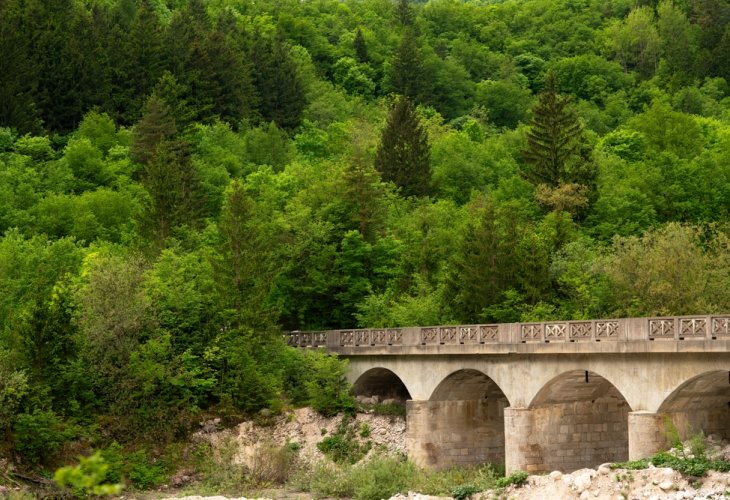Discovering the Untold Story of the 'Ad Halom' Bridge
Built in the late 19th century by the Turks, the bridge known as 'Ad Halom' has a story worth hearing.
 (Illustrative photo: shutterstock)
(Illustrative photo: shutterstock)The land of Israel—it holds everything. Snow in the north, desert in the south, rivers in the east. In peaceful times, we all love to explore it. When there's plenty of rain, some hurry to witness the floods. One spot where the rainwaters flow mightily is the 'Ad Halom' Bridge near Ashdod, channeling rainwaters from the entire lowland area. After the rains, it surges like a powerful river, showcasing the abundance of Hashem's blessings.
In times of war in the south, against adversaries, it's worth remembering that in every generation, enemies rise against us, yet Hashem saves us from their hands. This isn’t the first or second, or even the tenth time, that the enemy from the south has schemed to destroy us.
The western lowland area is sandy, built of kurkar hills. Floodwaters and streams cut through it from east to west, thus the route to the center of the country relies on various bridges.
The bridge, known today as 'Ad Halom,' was built in the late 19th century by the Turks, over the stream then called 'Wadi Sukrir.' The bridge carried the 'Jaffa-Gaza Road.' This construction was a renewal of a bridge from the Roman era, as the sea route from Egypt to Jaffa passed there since ancient times. This is likely the 'Way of the Philistines' mentioned in the Torah. Three kilometers south of the bridge was the Arab village 'Isdud,' hence the bridge was called 'Jisr Isdud.'
During World War I, the British took control of the bridge, halting Ottoman movement to and from the center of the country. During the Arab revolt, Arabs attempted to sabotage the bridge, which was a major traffic artery, and the British set up a fortified pillbox there.
In the month of Iyar 5708, 76 years ago, the Egyptian army invaded the Land of Israel, hours after Israel's declaration of independence. The invasion was near Rafah, from which the Egyptians moved to the village of Majdal (later known as Ashkelon). A day later, the Egyptians were in Isdud. Meanwhile, soldiers from the Givati Brigade blew up the Ottoman bridge north of Isdud. When the Egyptian army, with its heavy equipment, reached the bridge, it had to stop. There, the Israeli Air Force had a surprise for them: four Messerschmitt planes launched the air force’s maiden flight, striking the Egyptians from above.
The Israeli army wasn’t sufficiently powerful at that time to destroy the Egyptians, but with divine assistance (*siyat hadeshmayah*), it was enough to frighten and halt them. Hashem instilled fear in the hearts of the Arabs, and not just on this front, they were stopped in their tracks. During those days when the Egyptians were stuck there, frightened, Israel succeeded in solidifying control in the center of the country, and ultimately, the Egyptians were forced to retreat.
This sequence of events gave the bridge its name, 'Ad Halom'—up to here the enemy came with the intent to destroy us, and here Hashem saved us from their hand.
Today, the bridge has been restored, and there is also a lush park in the area, a memorial to Hashem's kindness and wonders.

